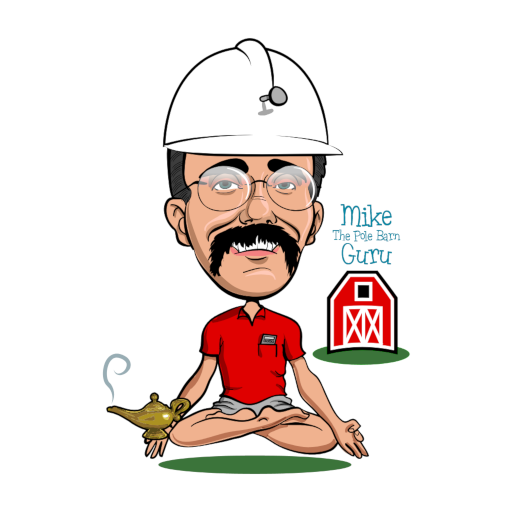In the aftermath of Hurricane Harvey nearly all Americans have seen video of the devastation across the coastal lowlands of Texas. Over and over photos of water logged drywall and carpets being torn out of homes which were flooded by epic rainfalls of biblical proportion were enough to churn my gut. Especially as so much of it could have been avoided. The houses which did not suffer flood damage – stilt houses!
How appropriate to have this question posed by reader BILL in SUMMERVILLE who writes, “Looking at options for a very simple cabin on a barrier island. Can I build a pole cabin on a raised telephone pole type foundation? (Poles would be jetted into a very sandy loam soil.) Can it be engineered to stand coastal SC wind load ratings? Many thanks.”
 Well Bill, they would not be telephone poles, but pressure preservative treated wood columns. After a trip to the Carolina coast a few years ago, I had written an article on this very subject: https://www.hansenpolebuildings.com/2014/11/kitty-hawk/
Well Bill, they would not be telephone poles, but pressure preservative treated wood columns. After a trip to the Carolina coast a few years ago, I had written an article on this very subject: https://www.hansenpolebuildings.com/2014/11/kitty-hawk/
Stilt houses are nothing new and appear in regions across the globe. They are well suited to coastal regions and climates ranging from subtropical to artic.
At my lakefront home outside of Spokane, Washington, my garage/studio apartment/office combination post frame stilt building has 14 feet of grade change in 24 feet. By the utilization of long columns I was able to construct on an otherwise impossible to build upon site.
Stilt home construction makes sense in many regions to reduce or eliminate possible damage from flooding. In unstable or weak soils areas, the pressure preservative treated columns can be embedded deep into the ground to provide positive anchorage against uplift and overturning.
My lovely bride and I will be on a cruise ship to the South Pacific next Spring – where stilt houses are used to construct livable space over water. Post frame construction is perfect for this application and reduces the impact upon fragile shorelines.
In warm climates, the shaded area beneath stilt houses helps to naturally cool the building. Not just from the shade itself, but also from the ability of breezes to free flow beneath the home.
Permafrost in the Arctic poses another set of design challenges. Permafrost is over 2/3rds water and if melted by the heat from a building becomes unstable allowing the structure to shift and settle. Stilt houses remove the heat source from the permafrost, keeping everything stable.
Don’t be the next victim of a Hurricane Harvey – look to a post frame stilt house as your design solution!







Looking for prints
Floor plans or third-party engineer sealed structural plans?